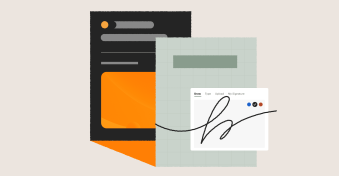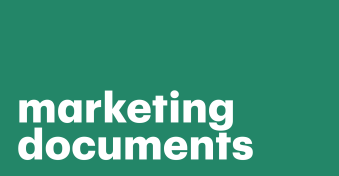The freelancer’s age is now. This means that now is simultaneously the best and the worst time to be a freelancer, as there are more companies today offering contracts, jobs, or projects. However, more freelancers are applying for each role than ever before.
Standing out from your competition and impressing your potential clients is even more critical in our times. This is why you need to create a winning business proposal to showcase your skills and get hired for the workload.
If anyone told you that writing a business proposal was fun, they would be lying. It can take a long time to draft a proposal that impresses the client enough to trust you with creating their website or project. Despite this, there are a few different ways to improve and even automate some of your proposal writing.
We’ll look at the importance of design in your proposals and how they can make or break your next contract.
Designing Creative Proposals
The words creative and proposal don’t feel like they meet many times. One sounds very creative, and the other sounds like something that is incredibly tedious and time-consuming. But having an innovative design proposal is a cornerstone of winning clients.
What is a design proposal then? It’s stating what you are planning on doing for your client. It’s traditionally very fluid and is open to many changes and updates, but it serves as a rough blueprint for what you intend to do.
Despite this, every single person you come across is a consumer of branding. It’s inescapable and all around us and every point of the day. Whether personal, professional, product, or service, we see it everywhere. Branding and design are a massive part of our everyday lives.
You’d be surprised how many people send out a DESIGN proposal with no design. The clue is in the name, and understanding concepts such as visual hierarchy is a simple but effective tool to use in your proposal. Whenever we see something, whether we know it or not, we make a value judgment on it, and this shows how deep-seated these values of branding and design play pivotal parts in our lives.
So how do you write a proposal that wows your potential clients and shows you’re ahead of the pack? Regardless of how creative you are, you’ll need to start with research to understand the client.
You want to stand out when submitting your bid, so don’t be afraid to use a range of different tactics in your proposal. If you think there is benefit in utilizing video, photos, interactive storytelling, then put them in. These can help set you apart from the rest.
Tips for Designing Your Proposal
You can apply many different tips to set you aside from the other bids. We’ll take a look at a handful of them to help you design your best business proposal.
Don’t just work in the text; utilizing a range of mediums is a great way of getting your proposal to stand out from the others. Not only does media make you 32% more likely to close, but it also helps break up your text and can even eliminate the need for excess words.
Infographics can be a great way to showcase a lot of information visually. Even if that’s not your forte, you can always find professionals who can help your business highlight its unique value to its customers. The goods news is that you can find reliable and easy-to-use graphic design services online who will turn your creative vision into visual realities while saving you time, money, and stress.
Remember to make your proposal about your client, not about you. You want to create a color palette designed for them, not one that represents your brand. This touch of personalization is something most designers overlook.
Use the right software for your proposal. Designing your submission in Microsoft Word or PowerPoint may be the most straightforward route, but their design flaws and limitations are prevalent. Instead, look at working with InDesign or other Adobe assets to make the most of your design and skills.
Keeping a note of the time you took pulling together, the proposal is always a good idea as some clients will pay you for your time. If it is a detailed one, you can even ask them (if they accept it). This way, you can create an invoice and look much more professional as a designer.
Understanding how to protect your proposal and making sure everyone understands the contract proposed is incredibly essential. People tend to sign documents without understanding or adequately reading them.
What to Include in Your Proposal
There’s a range of design elements you want to touch on when submitting your bid. Here are some of the most important ones now.
Title Page
This is where you want to set the tone for your proposal. You want it to be professional yet engaging and exciting but not distracting. This will just make your request look organized and not just a bunch of scribblings pasted together.
Introduction – Goals & Objectives
Unsurprisingly, the introduction is the most read part of your business proposal, it sets the tone for the project, so while it’s not specifically a design element, if it’s miswritten, it doesn’t matter how good the rest of your document is.
Ensuring you’ve set realistic and achievable goals and objectives for the project is vital to your proposal’s success. Understanding a reasonable pricing structure for each client should be considered.
Portfolio Samples or Testimonials
Showcasing the success stories you’ve had on similar projects, bids, and designs is a great way to win your potential client’s trust and respect, so having a small section is a good thing to factor in designing this proposal.
Aiming to provide similar work or projects is the goal here, but showcasing range is good too. With testimonials, you can help generate a bit more trust in your ability to create winning finished products or work.
Join a UX course
Showing a basic understanding of UX is an incredibly useful skill to showcase when preparing your proposal. Having UX knowledge and skills is a must these days, from understanding behavior to motivations to how UX impacts a site or design.
More than 87% of hiring managers say that acquiring UX Designers is a top priority, while it’s estimated that around 73% of companies plan to conduct UX testing in the next 12 months. In other words, joining an online UX Bootcamp to gain those skills, experience, and confidence needed to dive into a UX design career isn’t just an option but a necessity at this point.
Customized Solutions
Whatever the design you are pitching for, you want to have created something from understanding behavior to motivations to how UX impacts a site or design having something unique to your client; copy and pasting elements aren’t going to win you any projects.
You can borrow concepts and things that worked well from other designs you’ve worked on, but showing your client you’ve put the effort in to make this work for them is what they want to see.
Your USP or Value
Having a firm understanding of what you can offer that is unique to you, your unique selling point (USP) is helpful in a range of situations, and in designing a business proposal, it can help you stand out from a crowd.
Understanding and utilizing your brand while also remaining professional is one of the best techniques a designer can learn. It has an organized and systematic approach while simultaneously sprinkling in some personality and flavor.
You need to show your client that you can bring value to their business and why you are the designer they should pick for this project. You need to show that you are worth the investment and provide them with high-quality and on-time results better than the other designers.
Automation for Business Proposals
Don’t overlook the importance of automation. The design industry has seen massive leaps in the automation space, especially in the massive market overhaul of email, considered a dying form, which couldn’t be further from the truth. Several studies have shown that email campaigns are 7X more effective at generating sales than Twitter, Facebook, and LinkedIn combined.
Creating high-quality proposals can be a real time-consuming process, especially as each one has to be unique to each client, but that doesn’t mean you can’t use some tricks to shorten your time frame.
Just as people have a base resume and change it for each employer, you need to create base proposal templates, which will allow you to retune them for the client. Creating a template with the core design elements you want to use and adding in the business-related information as and when can help cut down your turnaround times.
Over time you’ll get an idea of what elements are popular and help you convert and even learn which ones aren’t helpful. This will up your chances of securing a client and making winning business proposals.
How Will Proposals Change in the Future?
Proposals will always be about fixing an issue for your client and why you or your business is the best option for them, so creating professional, well-designed proposals will help you stand out from the crowd and show you can create high-quality work for them.
In the last couple of decades, the process has changed from business pitches to printed documents, to competitions for the commission, to showcasing your skills digitally. Whatever happens in the future, we know businesses will always have designs to be made, pitches to be had, and proposals to be sent.
So as long as you keep up with how the industry is going and don’t fall into bad habits, you’ll always be at the top of the pile in your client’s eyes.

